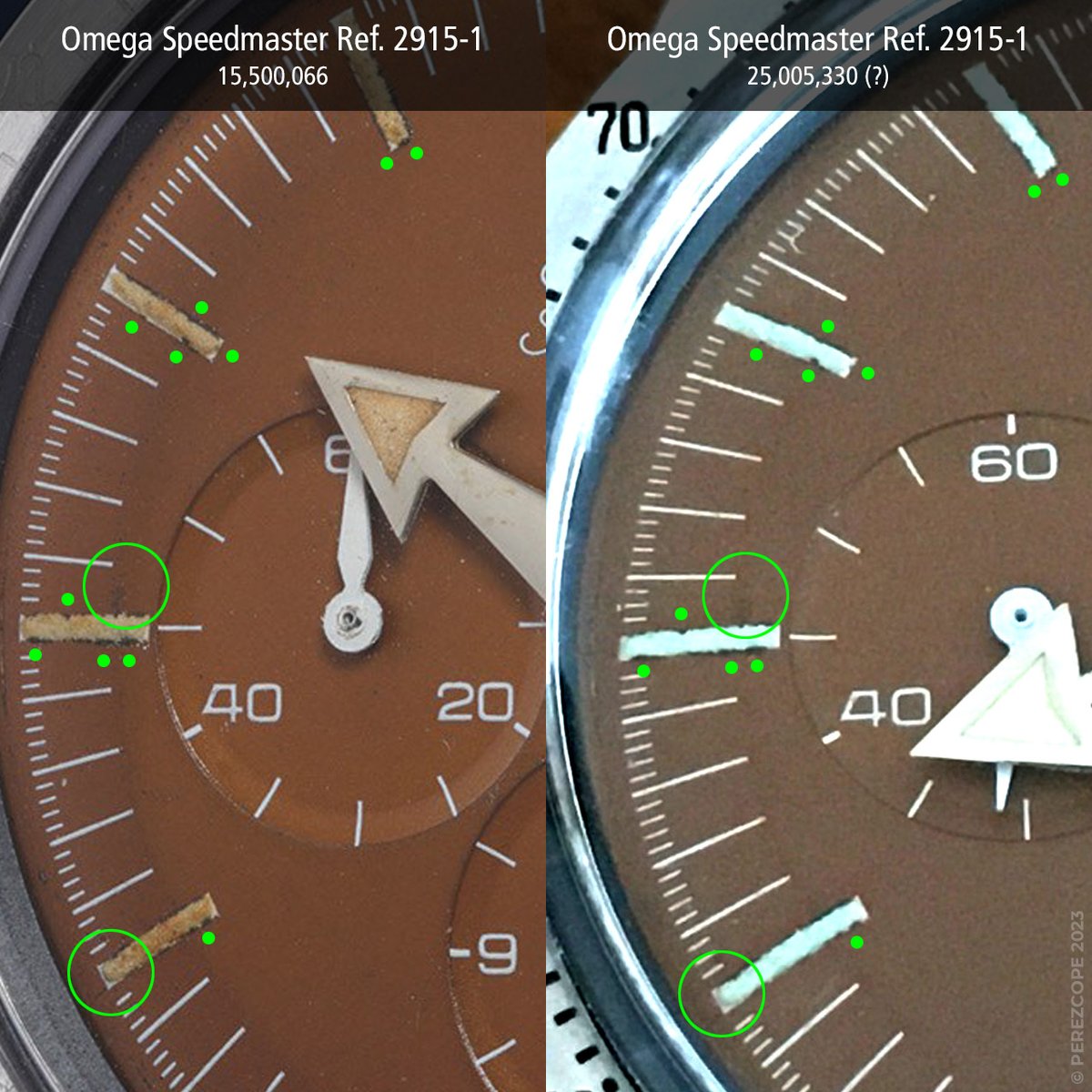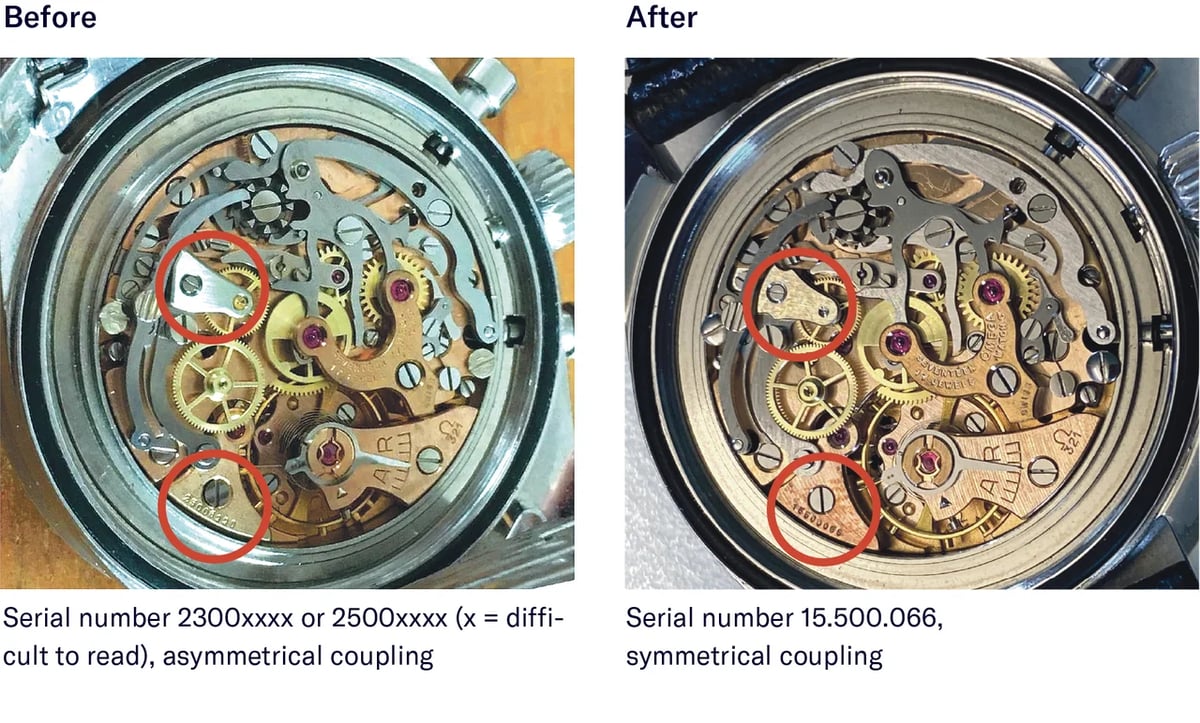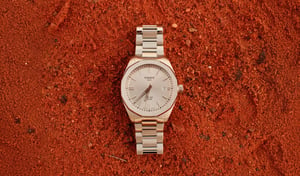As you’d expect from a country whose main export is discretion, the Swiss are great at avoiding scandal. However, the news that major auction house Phillips has sold an Omega Speedmaster with fake parts and documents to Omega itself (for the record-breaking sum of $4.5 million) is a story of such fraudulent magnitude that even the doyen’s of diplomacy can’t keep it quiet.
The alleged crime is a simple one to understand, but slippery enough for the plot to have, almost, been successful. According to reports from multiple sources that have since been confirmed by Omega, a rare vintage Speedmaster was created as a Frankenstein of parts from different watches in concert with three members of the brand’s Heritage Department. The fraudsters included the former head of the Omega Museum and Brand Heritage, Petros Protopapas, who helped authenticate the watch with an Omega Extract from the Archives created by the same Heritage Department.
The Speedmaster then went to auction via Phillips (described by the house as a “grail”), at which point the conspirators convinced Omega to purchase the watch for its museum. Somewhat unfathomably – despite heading to the auction block with a price guide of between CHF80,000 – 120,000 (AU$132,562 – AU$198,843) – the price Omega paid for the watch was a world-record-setting CHF3,115,500 (~AU$4,540,218).

RELATED: Major Auction House Shows The Dangers Of Vintage Rolex With Alleged $144k Fake Sale
The first public whispers of the alleged crime came following an investigation by horological investigator (and former Phillips authenticity consultant) Jose Pereztroika on his site Perezcope. This isn’t the first time he’s been concerned with Phillips’s quality of authentication, having previously identified the questionable authenticity of a retailer-signed Rolex Daytona by simply emailing the retailer in question and asking them if the watch was genuine.
According to their records, it wasn’t.
The story of the Frankenstein Omega Speedmaster was then picked up by the Swiss newspaper Neue Zürcher Zeitung (NZZ), which came to the same conclusion as Pereztroika. A Speedmaster that had been circulated for private sale several months before the auction (but hadn’t found a buyer) had been heavily modified to create the “grail”-level Omega Speedmaster that sold for a record-breaking price.

The dial was refinished to achieve the seemingly unbelievable even brown “patina” tone of the watch sold by Phillips. The chronograph hand was also replaced and the bezel was swapped out, taken from a different Speedmaster that was also sold by Phillips a few years earlier. Most importantly to sell the Franken-watch, however, the serial number of the movement needed to be changed.




This is where the Heritage Department members came into the mix…with archival knowledge of what serial number was required to make the watch believable. Movement parts where the serial number was engraved were replicated with the updated serial number and installed, before the Heritage Department issued archival documentation to match the updated serial number, making it almost impossible to know the movement wasn’t 100% authentic.

The fake Speedmaster was complete and ready for sale at Phillips, but the work of the Omega Heritage Department members wasn’t finished. They needed to convince their colleagues in the Omega executive team not only that they needed to buy the watch, but that they must be willing to spend millions to do so.
When the watch first sold, the sound of champagne bottles could have been heard in the offices of every party involved. Phillips had just helped set a new record for an important watch, Omega could proudly share the news of a world record while also being the undisclosed new owner of that same watch, and the alleged fraudsters had just pulled off the heist of a lifetime.
“The record sum was celebrated, by Phillips as well as by Omega,” explains NZZ. “Three million francs – such amounts for vintage watches were previously only reached by models from Patek Philippe or Rolex. Omega was so pleased that after the sale, they rushed to send out a gushing press release with the title ‘Sales price of Speedmaster breaks new world record.'”
It’s unclear when Omega became suspicious of the alleged fraud, but according to Pereztroika he made Phillips immediately aware of the issues he uncovered, contacting the auction house’s legendary watch auctioneer Aurel Bacs.
“After receiving pictures of the watch in its previous condition, I contacted Aurel Bacs to give him a heads up on a possible exposé,” says Pereztroika. “At the time, I was still helping Phillips with the authentication of certain watches and bound by my sense of loyalty. Bacs never replied to my message.”
Whether Omega became aware thanks to a similar tipoff from either Pereztroika or NZZ, or they arrived at the conclusion themselves, the watchmaker began its own internal investigation into the origins of the watch. In a statement released this week, Omega confirmed its investigation led to confessions from the three members of the Heritage Department and has referred the case for criminal prosecution. The identity of the seller is not yet public.

As published by independent watch journalist Brendan Cunningham, Omega’s statement in part reads:
“OMEGA and Phillips were the joint victims of organized criminal activity involving the selling of this specific watch by auction.
At the auction, hosted by Phillips, the Head of OMEGA Museum and Brand Heritage worked in tandem with intermediaries to purchase the watch for the OMEGA Museum, arguing that it was a rare and exceptional timepiece that would be an absolute must for OMEGA’s showcase collections, and should therefore be bought in this auction at all cost. […]
Its false legacy allowed the profiteers to justify a highly inflated bid made through the intermediaries, which allowed those involved to collect and distribute the profits generated from the sale.
As it stands at present, there are three former employees (among them the former Head of OMEGA Museum and Brand Heritage), who have admitted to the run of events when confronted during an OMEGA internal investigation, which is active and ongoing. OMEGA is bringing criminal charges against all involved.”
We’ll obviously keep a close eye on how the criminal case proceeds, but from everything we now know, the tale of the record-breaking fake Omega Speedmaster sold by Phillips is one of the watch industry’s darkest.
When you combine nine-figure incentives, closely kept insider knowledge and a market where both brands and auction houses benefit from new records being set, the allure of such an alleged scam will unfortunately and inevitably prove irresistible.
















